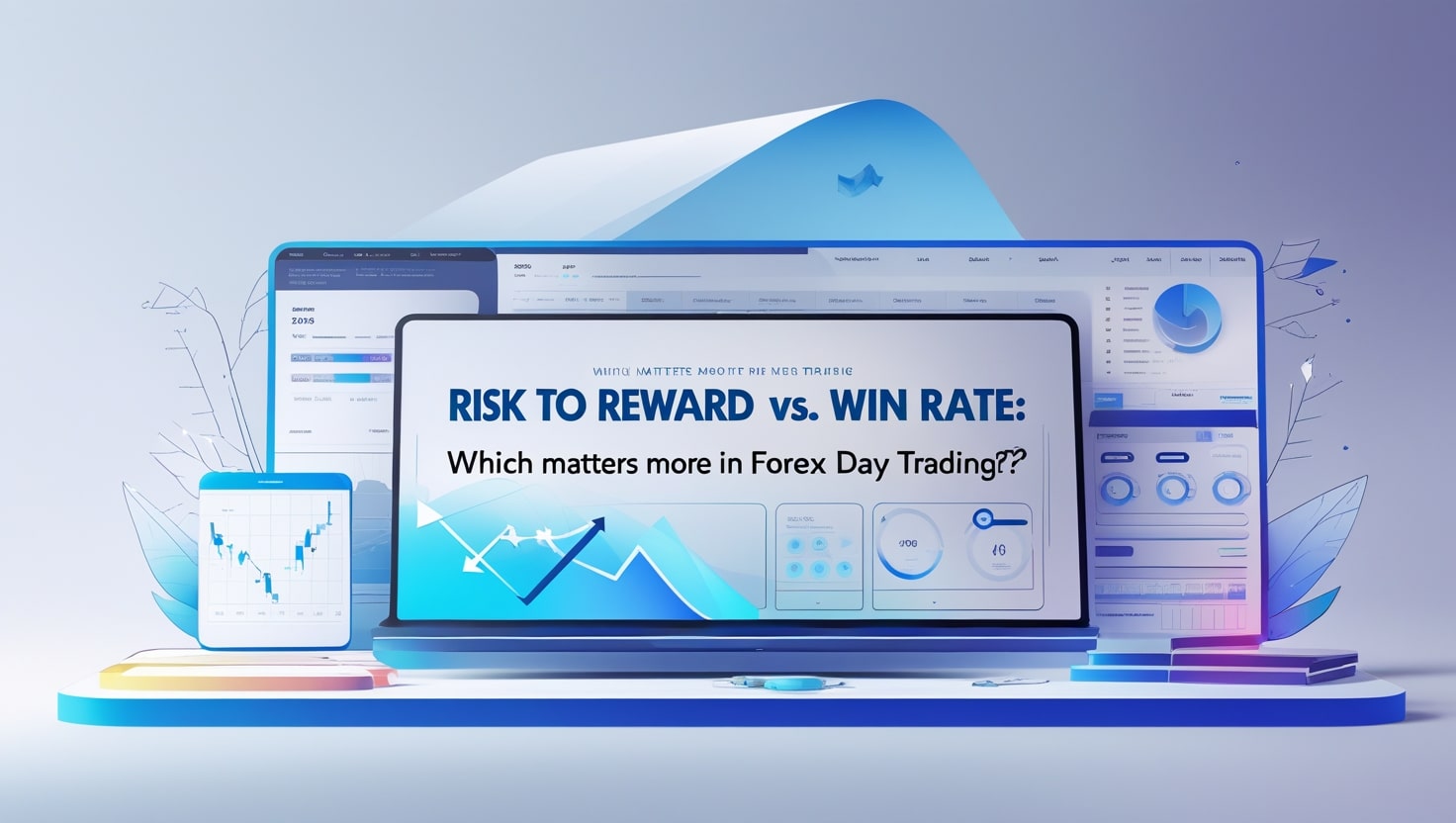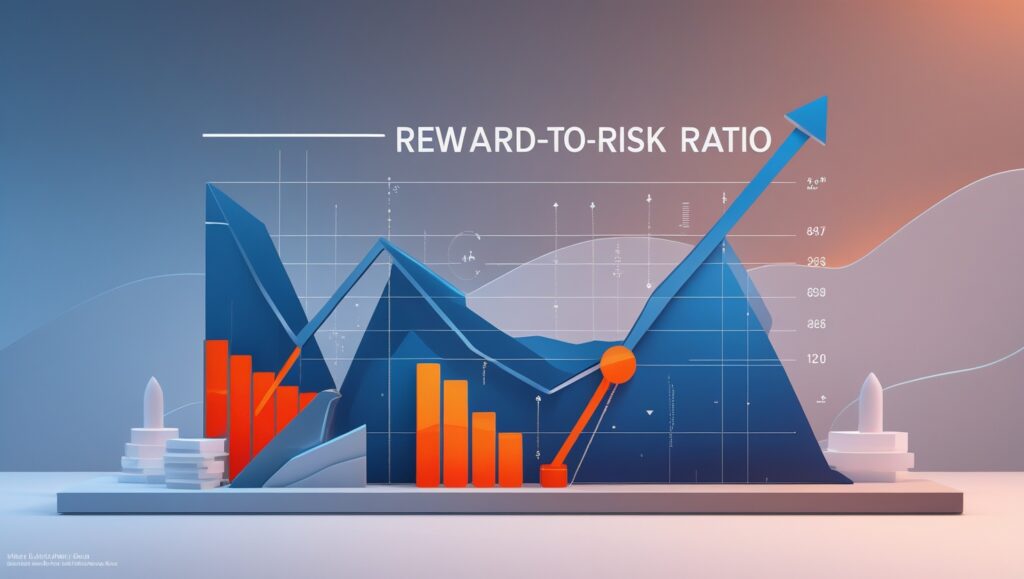
Traders continually manage probability in FX day trading. Success depends on the ability of traders to control risk and organize their trades in addition to their ability to forecast price fluctuations. The relationship between win rate and risk to reward ratio—and the age-old question of which is more important—is one of the most hotly contested subjects in trading strategy.
As someone who has spent years analyzing market behavior and developing trading strategies, I’ve found that while both are critical, understanding and optimizing the risk to reward ratio often provides the edge that separates consistent winners from the rest.
- Risk-to-Reward Ratio: Compares potential profit to potential loss (e.g., 2:1 means risking $100 to make $200)
- Win Rate: Percentage of profitable trades
- Formula: (Target Price – Entry Price) / (Entry Price – Stop Loss)
| Ratio | Required Win Rate |
|---|---|
| 0.5:1 | 67% |
| 1:1 | 50% |
| 2:1 | 33% |
| 3:1 | 25% |
What Is the Reward-to-Risk Ratio?
The reward-to-risk ratio, also commonly flipped as risk to reward ratio, measures how much potential profit you stand to gain on a trade relative to the potential loss. For example, a 2 to 1 risk reward ratio means you’re risking $100 to potentially make $200.

“The risk to reward ratio should be the first consideration before entering any trade. If you can’t justify the risk based on the potential reward, it’s not worth trading,” says Kathy Lien, Managing Director at BK Asset Management and a well-respected forex analyst.
This simple yet powerful metric can make or break a trading system. But before we jump to conclusions, let’s break down how to calculate risk to reward ratio properly.
How to Calculate Risk to Reward Ratio in Forex
To calculate the reward to risk ratio, you use this formula:
Reward-to-Risk Ratio = (Target Price – Entry Price) / (Entry Price – Stop Loss)
Enter your trade details below to calculate your risk-to-reward ratio:
A favorable risk-to-reward ratio (such as 1:2 or higher) means your potential profit is at least twice your potential loss. This structure allows for consistent profits even with a win rate of 50% or less over time.
Let’s say:
- Entry Price: 1.1200
- Take Profit (Target Price): 1.1300
- Stop Loss: 1.1150
The potential reward is 100 pips (1.1300 – 1.1200), and the potential risk is 50 pips (1.1200 – 1.1150). Therefore, the risk to reward ratio is:
100 / 50 = 2 to 1 risk reward ratio
This kind of structure is often deemed favorable, as even a 50% win rate would still result in consistent profits over time.
For convenience, many traders use a risk to reward ratio calculator or reward to risk ratio calculator to quickly plan trades and evaluate setups without manual calculations.
Win Rate: The Other Side of the Coin
The win rate is the percentage of your trades that are profitable. On its own, it may seem like a strong indicator of success—but without considering the risk to reward ratio, a high win rate can be misleading.
See how win rate and risk-reward ratio work together to determine profitability:
Imagine a system with a 90% win rate but a reward to risk ratio of 0.5:1. That means you’re risking $200 to make $100. All it takes is one or two losing trades to wipe out several winners. This is where balance becomes critical.
As Steve Burns, founder of NewTraderU, says:
“Many new traders obsess over win rate, but professionals understand that it’s the relationship between win rate and reward-to-risk ratio that ultimately determines profitability.”
Risk to Reward Ratio vs. Win Rate: Which One Matters More?
Let’s take a step back and examine the broader picture using a risk to reward ratio chart:
| Risk to Reward Ratio | Required Win Rate for Breakeven |
|---|---|
| 0.5:1 | 67% |
| 1:1 | 50% |
| 2:1 | 33% |
| 3:1 | 25% |
The higher your reward to risk ratio, the lower your win rate needs to be to remain profitable.
That means even with a modest win rate of 30%, a trader using a 3 to 1 risk reward ratio can still make consistent profits. On the other hand, a trader with a good risk to reward ratio of 1.5:1 might need a win rate closer to 40% to stay ahead.
What Is a Good Risk to Reward Ratio in Trading?
There’s no one-size-fits-all answer, but a good risk to reward ratio is typically considered to be at least 2:1. This provides enough buffer to absorb losses while capitalizing on winning trades.
“A minimum risk to reward ratio of 2:1 forces discipline and filters out low-quality setups,” notes Mark Douglas, author of Trading in the Zone. “It also helps reduce overtrading.”
If you’re wondering, “what is a good risk to reward ratio?” or “what’s a good risk to reward ratio in forex trading?”—the answer depends on your strategy, risk tolerance, and win rate, but aiming for a ratio between 2:1 and 3:1 is a solid foundation.
Practical Tips for Applying Risk to Reward Ratios
Here’s how I personally approach applying risk to reward ratios in real trading:
- Start with the stop loss: Define your risk level first, based on technical levels or volatility. Never the other way around.
- Project realistic targets: Use market structure, support/resistance, or Fibonacci levels to set attainable take-profits.
- Use a calculator: If you’re unsure how to calculate risk reward ratio, use a risk to reward ratio calculator. It ensures your trades meet your predefined criteria before execution.
- Log and evaluate: Keep a trade journal. Track both your win rate and reward to risk ratio to identify what needs improvement.
So, risk to reward ratio vs. win rate—which one matters more?
If I had to pick, I’d say the risk to reward ratio has a slight edge. It gives traders the flexibility to remain profitable even with a lower win rate. However, neither metric should be looked at in isolation. The synergy between the two defines a successful trading edge.
To be consistently profitable, your trading strategy should strive to optimize both. A high reward-to-risk ratio with a decent win rate is a formula for long-term growth.
Whether you’re manually planning trades or relying on a reward to risk ratio calculator, always ask yourself: “Am I taking on this risk for a reward that justifies it?”
Conclusion
Understanding the risk to reward ratio is fundamental to mastering forex day trading. It’s not just about being right—it’s about ensuring that when you are right, your wins are large enough to cover your wrongs. Combining a well-calculated risk to reward ratio with a realistic and consistent win rate creates a framework that’s not only logical but statistically profitable.
If you’re just starting, focus on learning how to calculate reward to risk ratio, set up a risk to reward ratio chart, and test various setups. The math doesn’t lie—and in a game of probabilities, it’s your most reliable ally.
FAQs on Risk to Reward Ratio in Forex Trading
1. What is the reward-to-risk ratio in simple terms?
The reward-to-risk ratio (also called risk to reward ratio) compares how much profit you expect from a trade versus how much you’re willing to risk. For example, a 2:1 ratio means you aim to make $200 for every $100 you risk.
2. How do I calculate the risk to reward ratio in forex trading?
You can use this formula:
(Take Profit – Entry Price) ÷ (Entry Price – Stop Loss)
Or use a risk to reward ratio calculator to quickly plug in your trade details and get the ratio instantly.
3. What is a good risk to reward ratio in trading?
A good risk to reward ratio is typically 2:1 or higher. This means you’re aiming to earn twice as much as you risk. However, the ideal ratio depends on your win rate and strategy. Even a 1.5:1 ratio can be profitable with a high win rate.
4. Can I have a low win rate and still be profitable?
Yes. If you use a 3 to 1 risk reward ratio, for instance, you only need to win about 25–30% of your trades to break even or profit. This is why focusing on the risk to reward ratio is so important—it gives you a margin for error.
5. Is there a tool to help me manage reward to risk ratios?
Yes, several platforms offer a reward to risk ratio calculator or built-in tools in trading platforms like MetaTrader and TradingView. These can help you determine your potential reward and risk before entering a trade, ensuring disciplined trading.

















